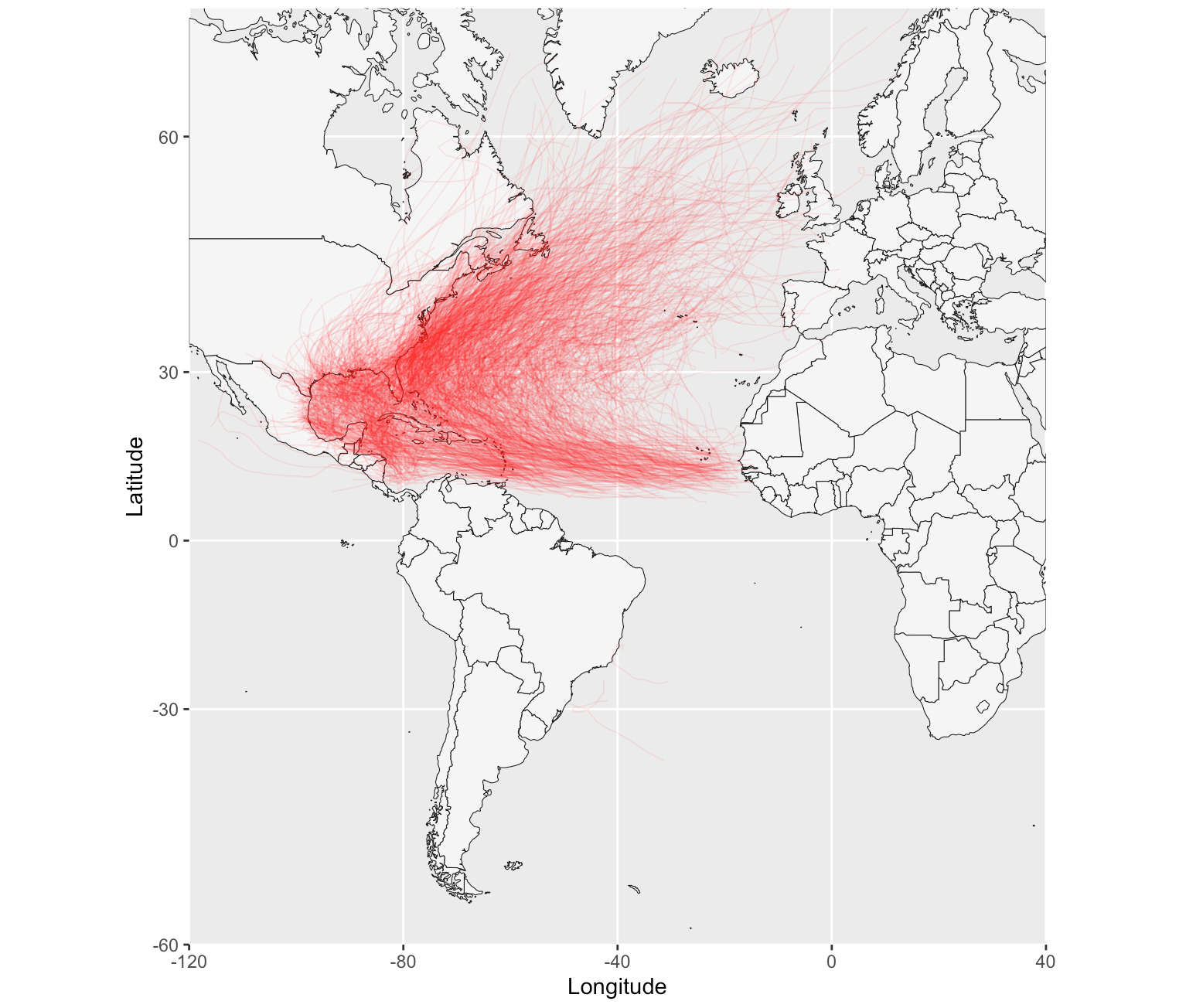Get NOAA IBTrack data ready to use in R.
The National Oceanic and Atmospheric Administration, which releases datasets known as International Best Track Archive for Climate Stewardship.
library(devtools)
install_github("basilesimon/noaastorms")getStorms: Fetch NOAA historical best track storms data
> df <- getStorms(c('EP'))
> df2 <- getStorms(c('EP', 'SP'),
dateRange = c(as.Date('2010-01-01'), as.Date('2012-01-01')))
> head(df[1:5])
Serial_Num Season Num Basin Sub_basin Name
2 1902276N14266 1902 01 EP MM UNNAMED
3 1902276N14266 1902 01 EP MM UNNAMED
4 1902276N14266 1902 01 EP MM UNNAMED
5 1902276N14266 1902 01 EP MM UNNAMED
6 1902276N14266 1902 01 EP MM UNNAMEDArgument: A vector of basin codes from the list:
- NA: North Atlantic
- SA: South Atlantic
- NI: North Indian
- SI: South Indian
- EP: East Pacific
- SP: South Pacific
- WP: West Pacific
Argument: A vector of two dates. Storms dated outside of this date range will be filtered out.
# load a map of the world and `clipPolys` it to avoid issues when zooming in with `coord_map`
wm <- map_data("world")
library("PBSmapping")
data.table::setnames(wm, c("X","Y","PID","POS","region","subregion"))
worldmap = clipPolys(wm, xlim=c(20,110),ylim=c(0, 45), keepExtra=TRUE)
# load storms for North Indian ocean
spStorms <- getStorms(c('NA', 'SA'))
ggplot(spStorms, aes(x = Longitude, y = Latitude, group = Serial_Num)) +
geom_polygon(data = worldmap, aes(x = X, y = Y, group = PID),
fill = "whitesmoke", colour = "gray10", size = 0.2) +
geom_path(alpha = 0.1, size = 0.8,
color = "red") +
coord_map(xlim = c(20,110), ylim = c(0, 45)) This package uses IBTrACS data v4.0, released from March 2019.
For a complete description of the changes in v4.0, read the official NOAA changelog.
